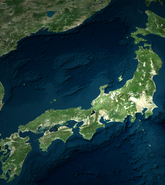NEWARK, CA – August 22, 2023 – Moody’s RMS®, the leading global catastrophe risk modeling and solutions company, estimates USD 4 to 6 billion in economic losses from the recent Lahaina Conflagration and Kula wildfires in Hawaii.
The loss estimate reflects property damage, contents, and business interruption, across residential, commercial, industrial, automobile, and infrastructure assets.
The loss estimation process leveraged building-level damage assessments from multiple sources including analysis of satellite and aerial imagery in the worst-affected areas, as well as damage maps from the Maui Emergency Management Agency published on August 11, 2023.
The estimate also includes various sources of post-event loss amplification (PLA) and potential for coverage expansion noted after major wildfires on the U.S. mainland in recent years.
While the economic loss estimate reflects direct and indirect losses from damage to physical assets, it does not consider macroeconomic factors such as expected reduction in the island’s Gross Domestic Product (GDP), government payments, or additional social costs due to the wildfires.
Most of the event losses are expected to be from the town of Lahaina, which sustained a catastrophic urban conflagration in the span of 12 hours that burned more than 2,100 acres (850 hectares) and destroyed almost 2,200 structures. Moody’s RMS estimates the burn footprints in Lahaina and Kula wildfires include insured property value in the range of USD 2.5 to 4 billion.
Most of the economic damage is expected to be covered by insurance, in the range of approximately 75 percent or more, because wildfire is a covered peril under typical insurance policies and the island has high insurance penetration rates. Additionally, several extenuating factors can drive losses higher than simple insured value estimates.
"Post-event loss amplification is expected to be high in this event due to the island effect on supply chains, high construction labor costs in general, inflationary impacts during the expected long recovery time, and potential ordinance and law requirements,” said Rajkiran Vojjala, Vice President Modeling, Moody’s RMS.
A combination of ongoing drought conditions, low humidity levels, and localized strong wind gusts produced dangerous wildfire conditions between Tuesday, August 8, and Friday, August 11 that led to the ignition and spread of multiple wildfires across the Hawaiian Islands.
The combination of Hurricane Dora located several hundred miles to the south of the Hawaiian Islands, and a strong area of high pressure located well to the north, produced a strong north-south pressure gradient across the central Pacific that resulted in strong easterly low-level winds towards Hawaii.
The resultant easterly low-level flow was also broadly associated with subsidence and an anomalously dry airmass. Wind speeds as high as 60 to 80 miles per hour were reported across the Hawaiian Islands.
This event follows an unprecedented wildfire season in 2019 in Maui, when over 20,000 acres burned and attention on the islands to wildfire risk has never been higher.
Michael Young, Vice President, Product Management, Moody’s RMS, noted: “When the rare situation of high wind and wildfire ignitions do occur again in the future, we need to be sure all the buildings comply with scientifically proven risk reduction features highlighted in programs such as the Wildfire Prepared Home program from Insurance Institute of Business and Home Safety.”
END
The technology and data used in providing this information are based on scientific data, mathematical and empirical models, and the encoded experience of scientists and specialists. As with any model of physical systems, particularly those with low frequencies of occurrence and potentially high severity outcomes, the actual losses from catastrophic events may differ from the results of simulation analyses.
MOODY’S RMS SPECIFICALLY DISCLAIMS ANY AND ALL RESPONSIBILITIES, OBLIGATIONS AND LIABILITY WITH RESPECT TO ANY DECISIONS OR ADVICE MADE OR GIVEN AS A RESULT OF THIS INFORMATION OR USE THEREOF, INCLUDING ALL WARRANTIES, WHETHER EXPRESS OR IMPLIED, INCLUDING BUT NOT LIMITED TO, WARRANTIES OF NON-INFRINGEMENT, MERCHANTABILITY AND FITNESS FOR A PARTICULAR PURPOSE. IN NO EVENT SHALL MOODY’S RMS (OR ITS PARENT, SUBSIDIARY, OR OTHER AFFILIATED COMPANIES) BE LIABLE FOR DIRECT, INDIRECT, SPECIAL, INCIDENTAL, OR CONSEQUENTIAL DAMAGES WITH RESPECT TO ANY DECISIONS OR ADVICE MADE OR GIVEN AS A RESULT OF THE CONTENTS OF THIS INFORMATION OR USE THEREOF.





